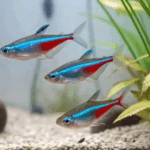Introduction: Why Choose a 50 Gallon Tank?
When you’re getting serious about fishkeeping, a 50 gallon tank is a game-changer. It’s large enough to give your fish room to swim, yet manageable enough for a beginner to maintain. If you’ve outgrown your 10 or 20 gallon setup or you want to start strong this size offers the perfect balance between space, aesthetics, and long-term stability.
One of the biggest benefits of choosing a 50 gallon aquarium is water quality. Larger tanks are naturally more stable, making it easier to maintain the right temperature and pH for your fish. This helps reduce stress on your aquatic pets and gives you more wiggle room when it comes to beginner mistakes. Plus, the extra space means more room to design a beautiful aquascape and house a diverse group of fish species.
Whether you want to keep a peaceful community of neon tetras, angelfish, or even explore planted tank setups — the 50 gallon tank opens up exciting possibilities. This guide will walk you through exactly how to set up a 50 gallon tank step-by-step, from choosing equipment to adding fish and maintaining a healthy ecosystem. Let’s dive in and build your dream aquarium!
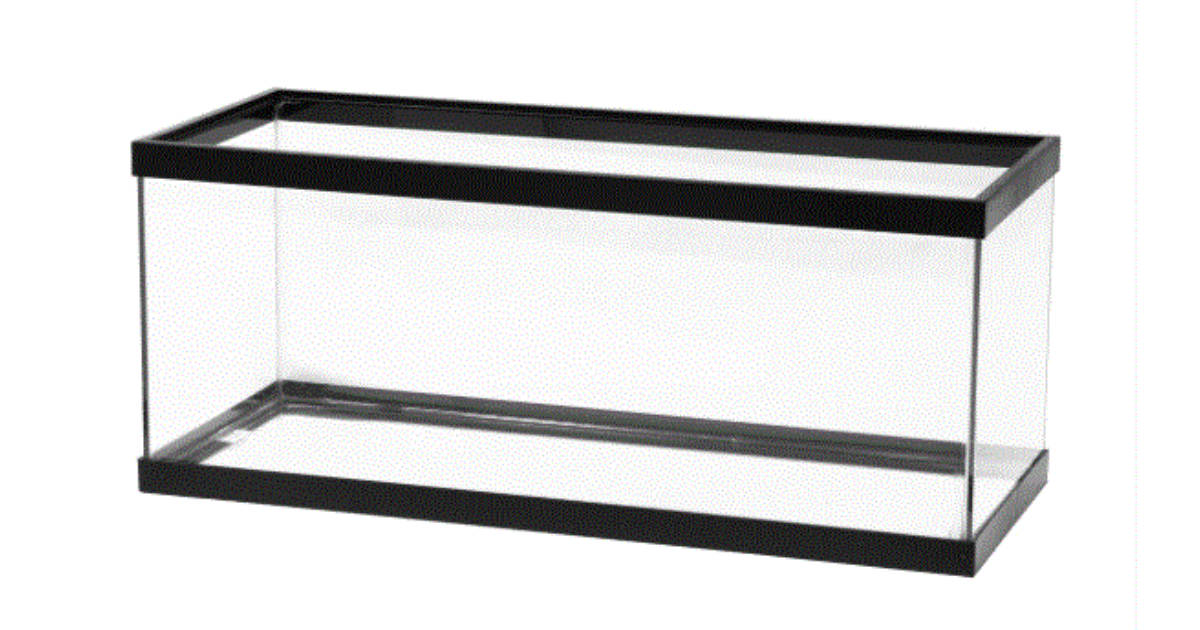
Essential Equipment You’ll Need
Setting up a 50 gallon tank the right way starts with having the proper equipment. You don’t need the most expensive gear, but you do need reliable tools to keep your aquatic environment stable and stress-free for your fish.
1. 50 Gallon Aquarium & Stand
First things first — a sturdy tank and matching stand. Make sure the stand is rated for 50 gallons (that’s over 400 lbs when filled with water, substrate, and décor). Glass tanks are more scratch-resistant, while acrylic is lighter and clearer.
2. Aquarium Filter
A strong, efficient filter is a must. For a 50 gallon tank, go with a canister filter or a high-capacity hang-on-back (HOB) filter. It should handle at least 200–250 gallons per hour. Look for one that offers mechanical, biological, and chemical filtration to keep your water crystal clear.
3. Heater & Thermometer
If you’re keeping tropical fish, maintain a water temperature around 74–80°F. Get an adjustable submersible heater rated for 50 gallons and a digital thermometer for daily monitoring.
4. LED Lighting System
Lighting isn’t just for looks — it supports plant growth and sets your fish’s natural day/night rhythm. Opt for a full-spectrum LED light, especially if you’re planning a planted tank.
5. Gravel/Substrate
Go for aquarium-safe gravel or sand depending on your fish type. For planted tanks, consider a nutrient-rich substrate to support healthy root growth.
6. Water Conditioner & Test Kits
Always treat tap water with a water conditioner to neutralize chlorine and chloramine. A basic test kit helps you monitor ammonia, nitrite, nitrate, and pH levels weekly.
Other helpful tools include an aquarium net, gravel vacuum, siphon, and a timer for your lights. With the right setup, you’ll save yourself time and stress down the road.
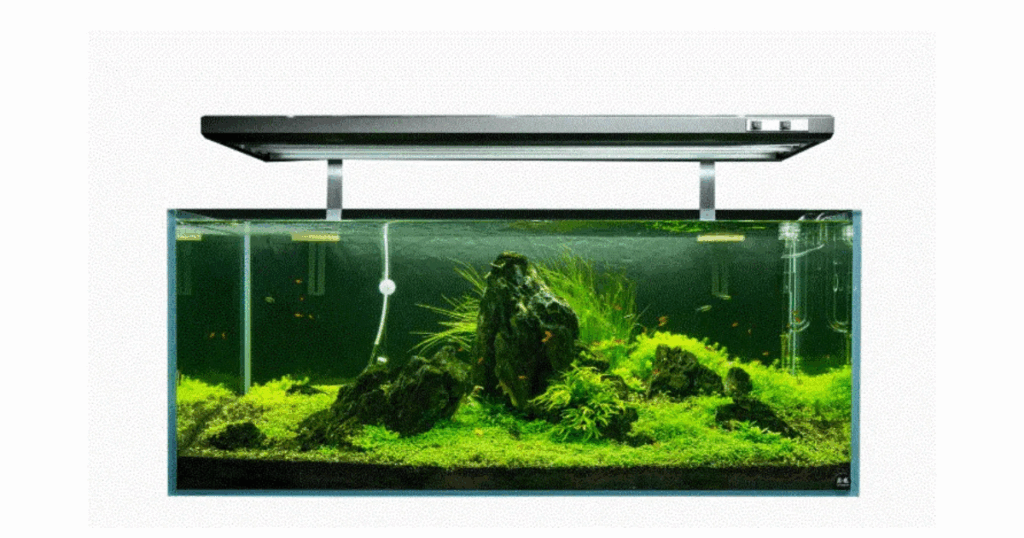
Step-by-Step Setup Guide
Setting up a 50 gallon fish tank may seem like a big task, but when you break it down step-by-step, it’s completely manageable—even for beginners. Follow this simple guide to get your tank up and running the right way.
Step 1: Choose the Right Location
Pick a flat, stable surface away from direct sunlight and temperature fluctuations (like windows or radiators). Make sure there’s access to power outlets and space for maintenance.
Pro Tip: Once filled, a 50 gallon tank isn’t easy to move—choose the right spot before adding water.
Step 2: Clean the Tank & Equipment
Rinse the tank, substrate, decorations, and equipment with lukewarm water only. Don’t use soap or chemicals—they can be harmful to your fish.
Step 3: Add Substrate & Décor
Add 1–2 inches of substrate across the bottom. Create depth with rocks, caves, and driftwood for hiding spots. If you’re planting live plants, now’s the time to place them.
Step 4: Fill with Water & Add Conditioner
Fill the tank slowly to avoid disturbing your layout. Use dechlorinated tap water or treat it with a quality water conditioner. Maintain the ideal temperature (around 76°F for most tropical fish).
Step 5: Install Equipment
Place your filter, heater, and thermometer in the tank, but don’t plug anything in just yet. Make sure your heater is fully submerged and your filter intake/output is positioned for good flow.
Step 6: Power Up & Check Settings
Turn on the filter and heater. Let your tank run for 24–48 hours and double-check your temperature, water flow, and any leaks. Your tank needs to stabilize before adding fish.
Step 7: Begin the Nitrogen Cycle
Before adding fish, you must cycle the tank. This builds beneficial bacteria that convert toxic ammonia into nitrite, then into safer nitrate. Use bottled bacteria or add a small hardy fish (like zebra danios) to jumpstart the process. Test water daily for ammonia, nitrite, and nitrate levels.
Important: This step may take 2–4 weeks. Don’t skip it—it’s crucial for a healthy tank.
Once your water parameters are stable (0 ammonia, 0 nitrites, <40 ppm nitrates), your tank is cycled and ready for fish!
Best Fish for a 50 Gallon Tank
One of the best parts about a 50 gallon tank is the flexibility—it’s big enough for a variety of beautiful fish species and even small communities. Whether you’re into schooling fish, centerpieces, or peaceful communities, this tank size gives you options.
Top Fish Choices for a 50 Gallon Aquarium
1. Tetras (Neon, Ember, Glowlight)
Tetras are peaceful, colorful, and love to school in groups of 6 or more. Their small size means you can keep several varieties together without overstocking.
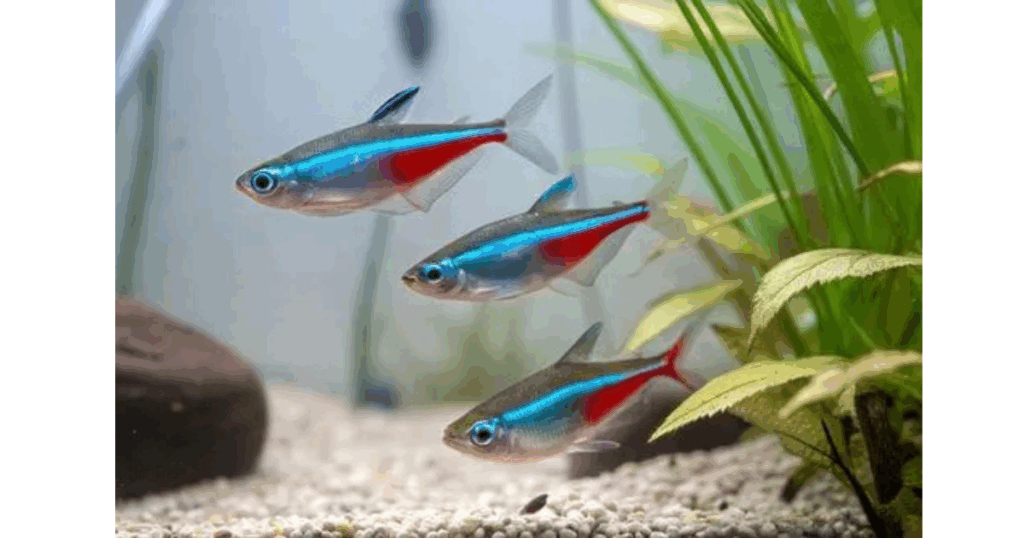
2. Gouramis (Dwarf, Honey, Pearl)
These semi-aggressive fish do well with similarly sized peaceful tank mates. A pair of dwarf or honey gouramis make great centerpiece fish.
3. Corydoras Catfish
Perfect for bottom-cleaning, these gentle, social fish should be kept in groups. They help keep uneaten food from rotting on the substrate.
4. Angelfish (1–2 Max)
With their graceful fins and larger size, angelfish are stunning—but territorial. Avoid small fish like neon tetras if you’re housing angelfish.
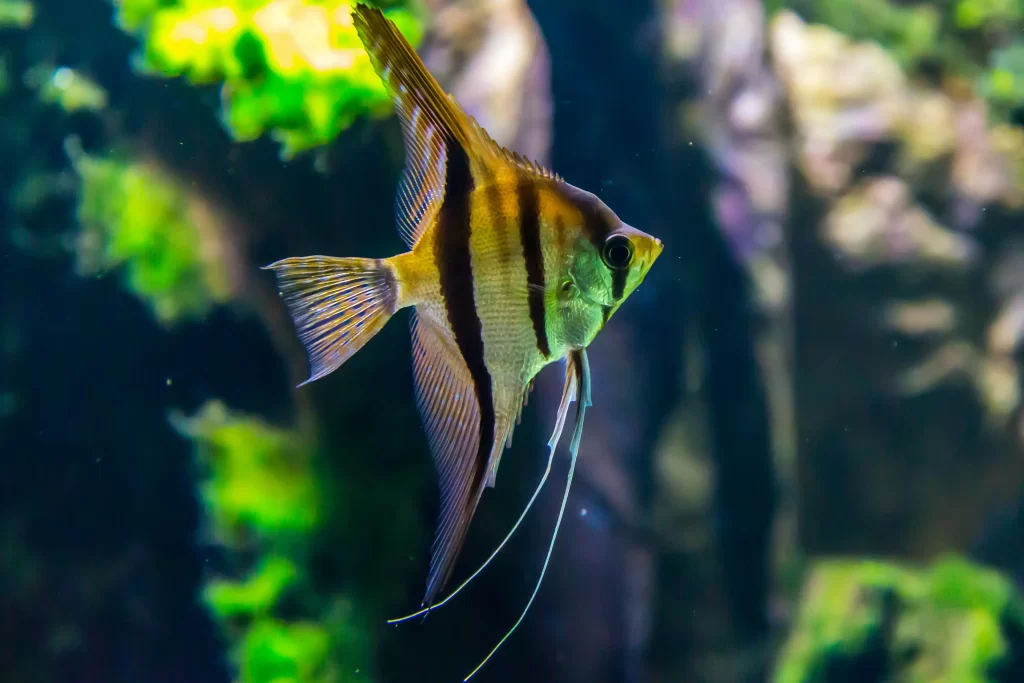
5. Livebearers (Guppies, Mollies, Platies)
Colorful and easy to care for, livebearers are ideal for beginners. Be mindful—they breed fast, so consider same-sex groups or get a plan for fry.
6. Cherry Barbs or Zebra Danios
Active swimmers and fun to watch, they’re great in schools and mix well with other peaceful fish.
Stocking Tips
- Avoid overcrowding: Follow the 1 inch of fish per gallon rule as a guideline, but research adult sizes.
- Compatibility matters: Mix species with similar temperament and water needs.
- Think in layers: Include top, mid, and bottom dwellers for a balanced, visually dynamic tank.
With thoughtful selection, a 50 gallon tank can become a thriving, peaceful aquatic world.
Common Mistakes to Avoid
Even with the best intentions, beginner aquarists often run into problems when setting up a 50 gallon tank. Avoiding these common mistakes can save you stress—and your fish.
1. Overstocking Too Soon
A 50 gallon tank may seem large, but every fish you add increases the bioload. Adding too many fish too quickly can overwhelm your tank’s filtration system and lead to deadly ammonia spikes. Always cycle your aquarium first and introduce fish gradually over several weeks.
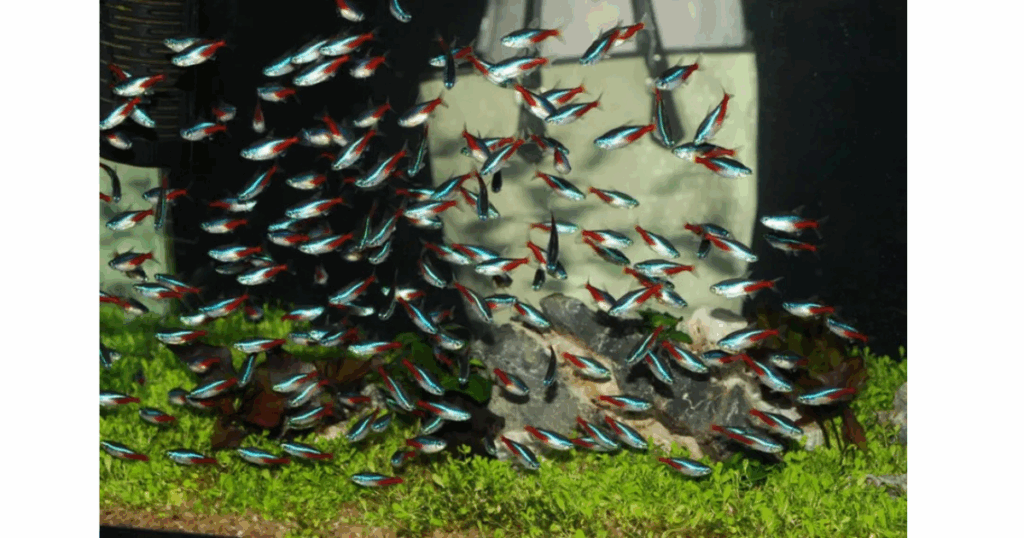
2. Skipping the Nitrogen Cycle
Starting a tank without understanding the nitrogen cycle is a recipe for disaster. Beneficial bacteria need time to establish in your filter and substrate to convert harmful waste into safer compounds. Use a water testing kit to track ammonia, nitrite, and nitrate levels during this process.
3. Choosing Incompatible Fish
Not all fish get along. Mixing aggressive species with peaceful ones, or combining fish with drastically different water requirements, can cause stress, injury, or death. Always research temperament, size, and habitat needs before buying.
4. Ignoring Equipment Quality
Going cheap on your heater, filter, or lighting may lead to frequent breakdowns. Invest in reliable, appropriately sized gear to support the health of your fish and plants.
5. Neglecting Routine Maintenance
A big tank still needs regular care. Skipping water changes, overfeeding, or letting algae build up can throw your tank out of balance quickly.
Avoiding these pitfalls helps you build a healthier, longer-lasting aquatic ecosystem.
Maintenance Tips for Long-Term Success
Setting up your 50 gallon tank is just the beginning—keeping it thriving takes consistent, smart maintenance. Here’s how to keep your aquarium clean, healthy, and stress-free for both you and your fish.
1. Regular Water Testing
Use a reliable aquarium test kit weekly to monitor pH, ammonia, nitrites, and nitrates. Catching imbalances early helps prevent fish illness and algae outbreaks.
2. Weekly Water Changes (20–30%)
Replace 20–30% of the water each week with dechlorinated tap water. This dilutes built-up waste and replenishes essential minerals without disrupting the tank’s balance.
3. Clean the Substrate
Use a gravel vacuum during water changes to remove debris and uneaten food from the bottom. This helps prevent ammonia spikes and cloudy water.
4. Maintain the Filter (But Don’t Overdo It)
Rinse filter media gently in old tank water—not tap water—to avoid killing beneficial bacteria. Replace mechanical media monthly, but keep biological media intact as long as possible.
5. Monitor Algae Growth
A little algae is normal, but too much can signal excess nutrients or light. Use an algae scraper weekly and adjust your lighting schedule or feeding routine if needed.
6. Observe Your Fish
Take a few minutes daily to watch your fish. Any unusual behavior, discoloration, or clamped fins can signal a health issue. Early detection = easier treatment.
With these simple routines, you’ll keep your 50 gallon aquarium beautiful and balanced for years to come.
Frequently Asked Questions (FAQs)
How many fish can I keep in a 50 gallon tank?
It depends on the size and species of fish. A general rule is one inch of fish per gallon, but this varies based on activity levels and bio-load. For example, you could house a community of 20–25 small schooling fish (like tetras) or a few medium-sized species.
How long should I cycle a 50 gallon tank before adding fish?
The nitrogen cycle usually takes 4 to 6 weeks. During this time, beneficial bacteria establish themselves to handle waste. Use test kits to monitor ammonia, nitrite, and nitrate levels. Add fish only when ammonia and nitrites are at 0 ppm.
What’s the ideal temperature for a 50 gallon tropical aquarium?
Most tropical fish thrive between 74°F and 80°F (23°C–27°C). Always research the needs of the species you’re keeping and use a reliable aquarium heater with a thermostat.
💡 Can I use LED lights for a 50 gallon tank?
Absolutely! LED lights are energy-efficient, long-lasting, and great for both fish-only and planted tanks. Look for full-spectrum LED lighting if you have live plants.
How often should I clean a 50 gallon fish tank?
Perform a partial water change (20–30%) once a week, vacuum the substrate, and wipe down algae as needed. Clean filter media monthly (rinse in tank water) to maintain healthy bacteria.

